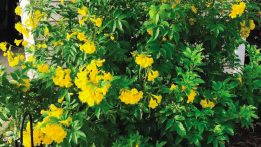Developers carved Killearn Estates, Tallahassee’s first planned community, from the 3,800-acre Velda Dairy farm in 1964. Thomasville Road had two lanes then, and Interstate 10 did not exist. When Velda Dairy owned this land, the USGS maps labeled that lake as “Long Pond.” The dairy used it to water their livestock and as a fishery. After the developers bought it, they changed its name to Lake Kinsale and Lake Killarney. The latter eventually flows into yet another lake, called Kanturk. Besides these three bodies, a dozen or so other small lakes and ponds connect to this chain of lakes during high water levels. This community is now mostly built out.
The main draw for me over the past five years has been the lakes’ wildlife—primarily birds. At Shannon Lakes Park, I saw a red-shouldered hawk fend off black and turkey vultures for a freshly nailed squirrel. He finally grabbed the ill-fated rodent with his sharp talons and flew off with it. On other occasions, it has been fascinating to watch barn swallows repeatedly dash through the box culvert that separates Lake Kinsale from Lake Killarney. Perhaps the birds do this to drive insects out of the tunnel so they can see and catch them more easily. Then again, maybe their daring flights merely give them a rush. Besides the swallows, herons and egrets commonly frequent the lakes. These include some of the rarer ones, such as tri-colored herons and snowy egrets.
Other uncommon birds I have seen there are wood storks, limpkins, white ibises and roseate spoonbills. During low water, you often see egrets, storks and ibises lurking in the shallows looking for fish in the west end of Killarney. At times, you will find limpkins creeping along the shallows seeking island apple snails. Although these exotic snails draw limpkins, they also devour some of the lakes’ more desirable aquatic plants. You will also see lots of native wood ducks and other waterfowl on Lake Kanturk. Bald eagles nest there in trees standing in or along that lake. Ospreys and kingfishers can be seen skimming the water surface seeking prey. Last spring, while it was still cool out, a small flock of white pelicans showed up on the lakes for a few weeks. When water levels allow, anglers congregate on or beside the lakes to test their skills. They often snag bass, bream, catfish, gar and speckled perch from the depths. I personally would never knowingly eat any fish that came from these waters. Scientists routinely test the quality of the water there. They have labeled these lakes as eutrophic but “impaired.”
Besides critters, plants commonly found either in or along the sides of the lakes include both unwanted invasive and non-invasive native species. Hydrilla, water hyacinth, taro and alligator weed make up the former. Grass carp have been brought into the lakes to help contain exotic weeds. Yellow lotuses, water lilies, spatterdocks, button bushes, willows and maidencanes make up some of the latter.
While far from perfect, these suburban lakes have served to renew my spirits and inspire me and others who live in the Sunshine State’s eighth-largest city. Since the lakes are very shallow, it is easier for them to become stagnant during increasingly frequent and lingering droughts. What little water that usually remains then becomes choked with unsightly and toxic algae. Fortunately, when the heavy rains come, they flush these water bodies. This cleanses and makes them much more attractive to wildlife and humans. I look forward to more delightful and unexpected encounters with wild things at Killearn’s chain of lakes and encourage you to explore the lakes as well! ![]()
Mike Wisenbaker





